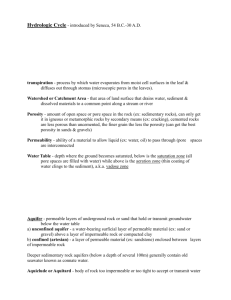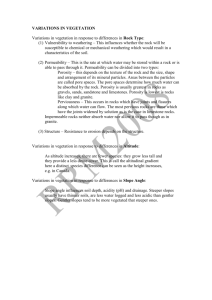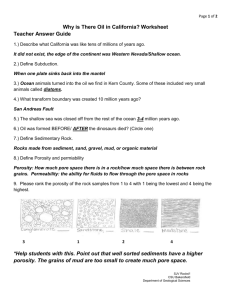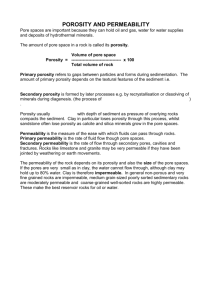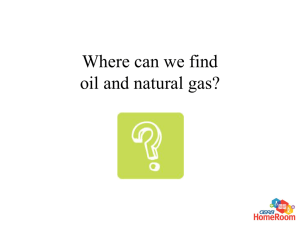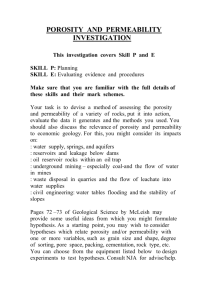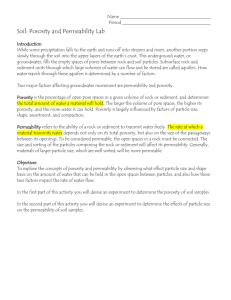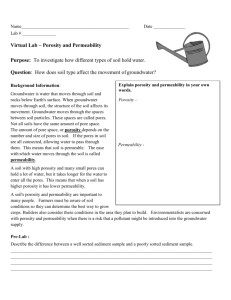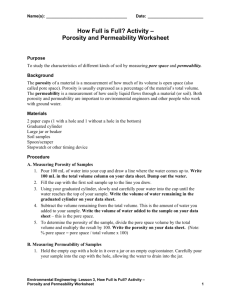Love Canal: A Man Made Disaster
advertisement
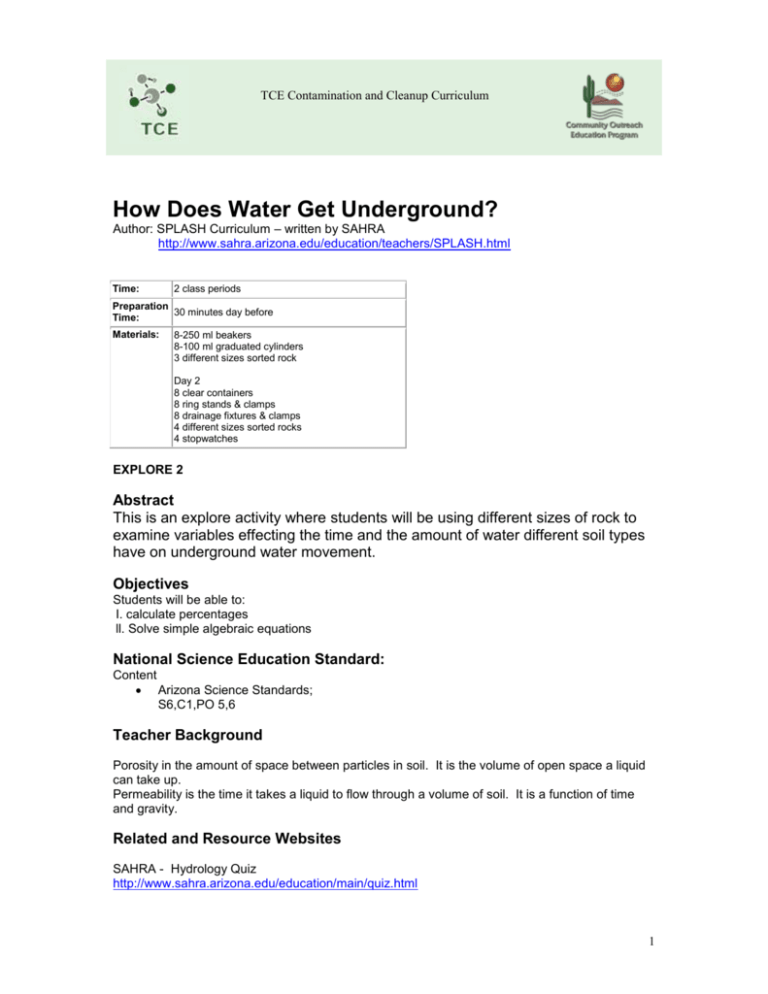
TCE Contamination and Cleanup Curriculum How Does Water Get Underground? Author: SPLASH Curriculum – written by SAHRA http://www.sahra.arizona.edu/education/teachers/SPLASH.html Time: 2 class periods Preparation 30 minutes day before Time: Materials: 8-250 ml beakers 8-100 ml graduated cylinders 3 different sizes sorted rock Day 2 8 clear containers 8 ring stands & clamps 8 drainage fixtures & clamps 4 different sizes sorted rocks 4 stopwatches EXPLORE 2 Abstract This is an explore activity where students will be using different sizes of rock to examine variables effecting the time and the amount of water different soil types have on underground water movement. Objectives Students will be able to: I. calculate percentages ll. Solve simple algebraic equations National Science Education Standard: Content Arizona Science Standards; S6,C1,PO 5,6 Teacher Background Porosity in the amount of space between particles in soil. It is the volume of open space a liquid can take up. Permeability is the time it takes a liquid to flow through a volume of soil. It is a function of time and gravity. Related and Resource Websites SAHRA - Hydrology Quiz http://www.sahra.arizona.edu/education/main/quiz.html 1 TCE Contamination and Cleanup Curriculum Activity Teacher Instructions: Day I: Porosity Lab Station - The following instructions can be posted adjacent to the porosity lab station or they can be handed to each group of students. Porosity is a measure of the space between the sand and/or rocks relative to the bulk or total volume occupied by the sample. 1. Measure 100 ml of the four rock samples (each with a different particle diameter) into a beaker. Gently tap the beaker to settle the soil. Add more rock if necessary. 2. Fill the graduated cylinder with 100 ml of water and carefully pour the water into the beaker. 3. Repeat step #2 until the water reaches the until the rocks are completely covered. Find and record the total amount of water added by subtracting the final water volume from the initial water volume (should be 100 ml). 4. Find the ratio of pore space for each rock sample. a. Record the total volume occupied by the rock sample including the pore space (should be 100 ml) b. Record the total volume of the pore space between the rock samples. c. Divide the volume of pore space by the total volume of the rock sample. 5. Which of the four rock samples has the greatest amount of pore space? Rank the rock samples from the most to the least in terms of porosity. Day II: Permeability Lab Station – Set up at least four different lab stations. The basic equation of groundwater flow relates flow velocity to SPLASH Module 4: Water Processes hydraulic head (the pressure force acting to move water through the ground) by two factors collectively called the hydraulic conductivity. One of these is related to fluid properties, the second is related to soil properties and is called permeability. This activity measures the saturated hydraulic conductivity with the “falling head” technique, which is directly proportional to permeability. 1. Set up station one with two columns of well sorted (small size) rocks. 2. Set up a second station with two columns of well sorted (medium size) rocks. 3. Set up station three with two columns of well sorted (large size) rocks. 4. Set up station four with two columns of a mixture of all three sizes of rock. 2 TCE Contamination and Cleanup Curriculum Student Directions 1. Measure and record the diameter of your cylinder (d) and the length/depth of rocks or soil in your column (L). 2. Fill the graduated cylinder with 100 ml of water; Place the 200 ml beaker under your column to catch water. 3. Prepare to measure and record the initial height (hi) of the water above the sample surface and to reset/start the stopwatch when water is first poured into the column (t=0). 4. Rapidly pour 100 ml of water into the column. 5. Record the time it takes the water surface to fall to the top sample surface (?t), or if infiltration is relatively slow, select an appropriate stop time and also record the height of the water level above the sample surface (hf, which might be 0). 6. Repeat this procedure two more times and record the average of the three trails on the student worksheet. 7. Calculate hydraulic conductivity (K) as: K = (L/?t) ln((hi+L)/hf+L)) [cm/s] Permeability = K / 100,000 [cm2] Closure: Teacher will have students use the terms porosity and permeability appropriately while demonstrating flow of a pollutant through the water model. Each student will explain what is occurring in the model as the teacher places a pollutant in the lake , as it disperses through-out the soil and as the pollutant is extracted by pumping. This practice will give each student many chances to used these words correctly and distinguish between the two processes. Embedded Assessment: o Accuracy of calculations. o Students will be illustrate and explain the processes of porosity and permeability in their note book 3
